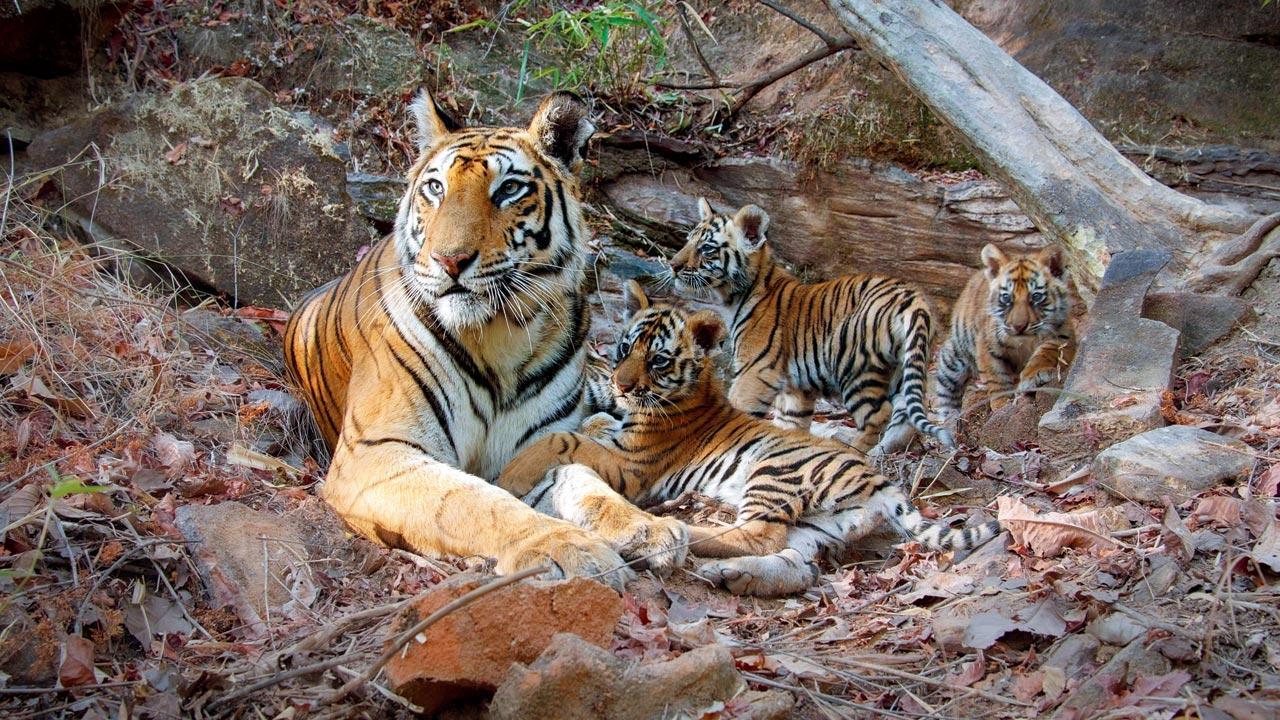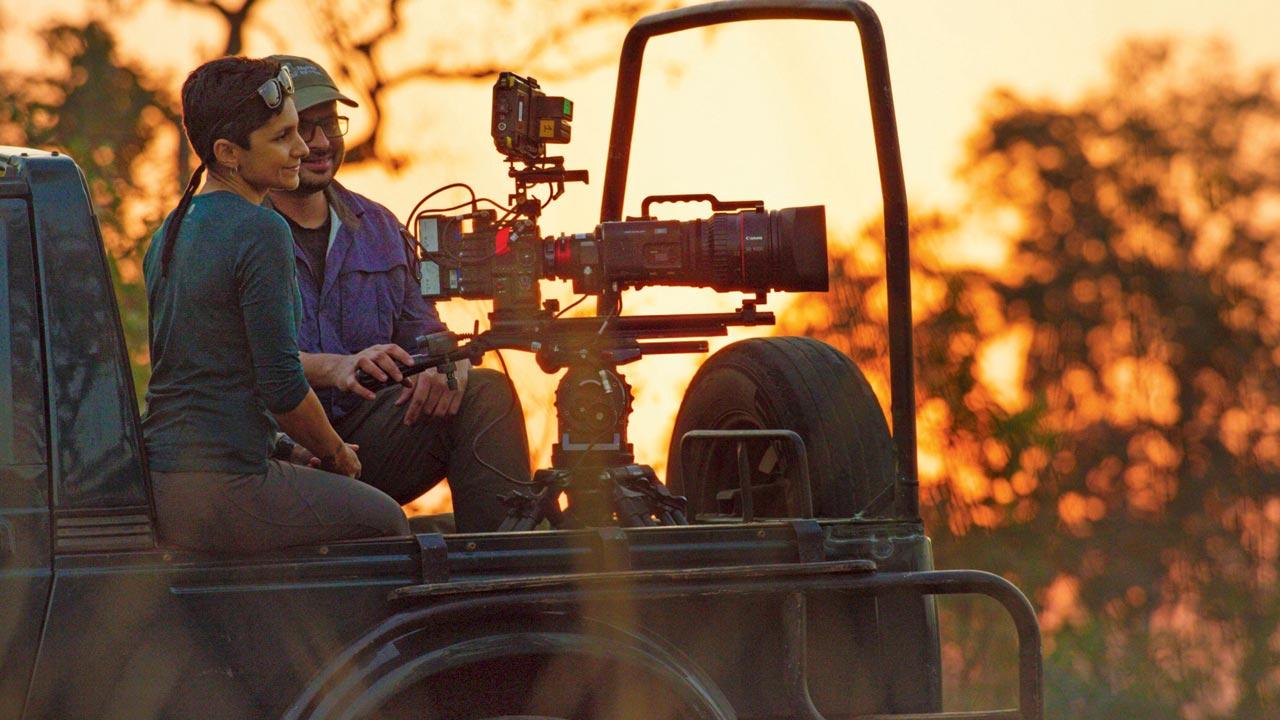Having filmed over 1500 days across four locations, Tiger directors Mark Linfied, and Vanessa Berlowitz give a low-down on how they gave shape to the Pee Cee-powered documentary about big cats

A still from Tigers
In the heart of India’s lush forests, resides a young tigress Ambar, who raised four cubs. While teaching them skills to survive in the jungle, she protected them from other wild predators, including pythons, bears and male tigers. Navigating the lives of this ambush of tigers are director Mark Linfield, and co-directors Vanessa Berlowitz and Rob Sullivan in Tiger.
ADVERTISEMENT
The Disney+ Hotstar documentary, narrated by Priyanka Chopra Jonas, is the result of 1,500 days of filming. Was it an instant yes when the project came their way? Hardly. Lin remembers the journey started almost 15 years ago. “At that time, Disney had just started doing feature-length wildlife programmes, and one of the earliest films we were asked to make was about tigers. Vanessa and I had filmed a number of shows on tigers, [so] we said, ‘No way, it’s too hard.’ It’s difficult to capture 75 minutes of tiger behaviour with lots of action, drama and story. So, we parked it and we went on to make films about monkeys, elephants, chimpanzees, bears and what have you,” says Linfield.
 The crew of Tiger filming
The crew of Tiger filming
Six years later, the husband-wife duo was contacted by Indian forest conservationists to consider making a film on tigers again. The stars aligned as they
had a perfect story in a fantastic tigress and her cubs. So, Linfield and Berlowitz contacted the channel to check whether it was still interested in a film on the big cats. It was a big yes.
With that began the six-year journey to shoot the documentary—produced by Linfield, Berlowitz and Roy Conli—amid the two waves of COVID. Berlowitz chimes in, echoing the excitement and challenges they faced during the show’s making. “The documentary took over six years, with 1,500 filming days spread across nearly five years. It was a labour of love amidst formidable obstacles,” she says. Shooting big cats is challenging given their elusive nature. Linfield and Berlowitz credit the local guides who helped them capture the beasts in all their glory. “Tigers are incredibly hard because they regularly spend two-thirds of the day sleeping. When they’re not asleep, they’re often hidden behind foliage. They’re often very far from the road, [deep in] the forest. If we hadn’t had such fantastic local Indian guides and experts, we would have been nowhere. We were totally reliant on our guides; they had an antenna for the majestic creatures. We also had the assistance of the forest department.” Berlowitz explains that while the tigers are secretive and elusive, there was no danger to human life. “We observed all the forest rules. Of course, they are fierce predators; that’s why you stay in your vehicle.”
 Mark Linfield and Vanessa Berlowitz. Pic/Getty Images; (right) Priyanka Chopra Jonas
Mark Linfield and Vanessa Berlowitz. Pic/Getty Images; (right) Priyanka Chopra Jonas
Linfield notes that a lot of it wouldn’t have been possible without high magnification telephoto lenses that are gyro-stabilised. “We used them from a vehicle, [which could capture animals] even a thousand millimeters away. We could film a tiger while driving and as the tiger is walking. The roads aren’t good in those [areas]. These gyro-stable cameras with high lenses give us incredibly smooth shots. You’ll see a lot of the track shots that are slowly tracking tigers that are very far away. Technology really helped us. When we first filmed tigers [decades ago], we didn’t have that. We used to be on a truck or the back of a jeep. We’d get a glimpse of a tiger from one angle, and then it would be gone [in a second].”
Tiger not only showcases the captivating lives of these endangered animals, but also highlights how India has had remarkable success in its conservation efforts. “Their numbers have gone up from one-and-a-half thousand in 2006 to over three-and-a-half thousand. So, there is a sense of pride among the forest department,” says Berlowitz. At present, India has 55 protected areas designated as tiger reserves. As of 2023, there were 3,682 wild tigers in India, which is almost 75 per cent of the world’s wild tiger population.
Tigers on the Rise, a companion show, sheds light on India’s conservation efforts. “It specifically celebrates what an amazing job India is doing concerning its tigers. There aren’t many good conservation success stories in the world at the moment, but your tigers are absolutely one of them,” adds Linfield.
 Subscribe today by clicking the link and stay updated with the latest news!" Click here!
Subscribe today by clicking the link and stay updated with the latest news!" Click here!












